
Products
DJI Dock 2 Vs DJI Dock
Explore the key upgrades of DJI Dock 2 compared to the original, and how they enhance automated & remote drone operations.
DJI Dock 2 has key upgrades compared to the original DJI Dock;
Improved features include smaller footprint and increased flight time/operating radius;
DJI Dock 2 compatible with the new DJI M3D drone with mechanical shutter and 0.7s shooting interval - making it the first DJI drone-in-a-box engineered for high-precision surveying;
DJI Dock 2 comes to market as a more cost-effective solution compared to Dock 1, and has an extremely low price point compared to other docking stations on the market;
Despite Dock 2's enhancements, the original DJI Dock still has the edge in some departments, making it a viable solution for certain operations.
DJI has continued to innovate the drone-in-a-box market with the release of the DJI Dock 2.
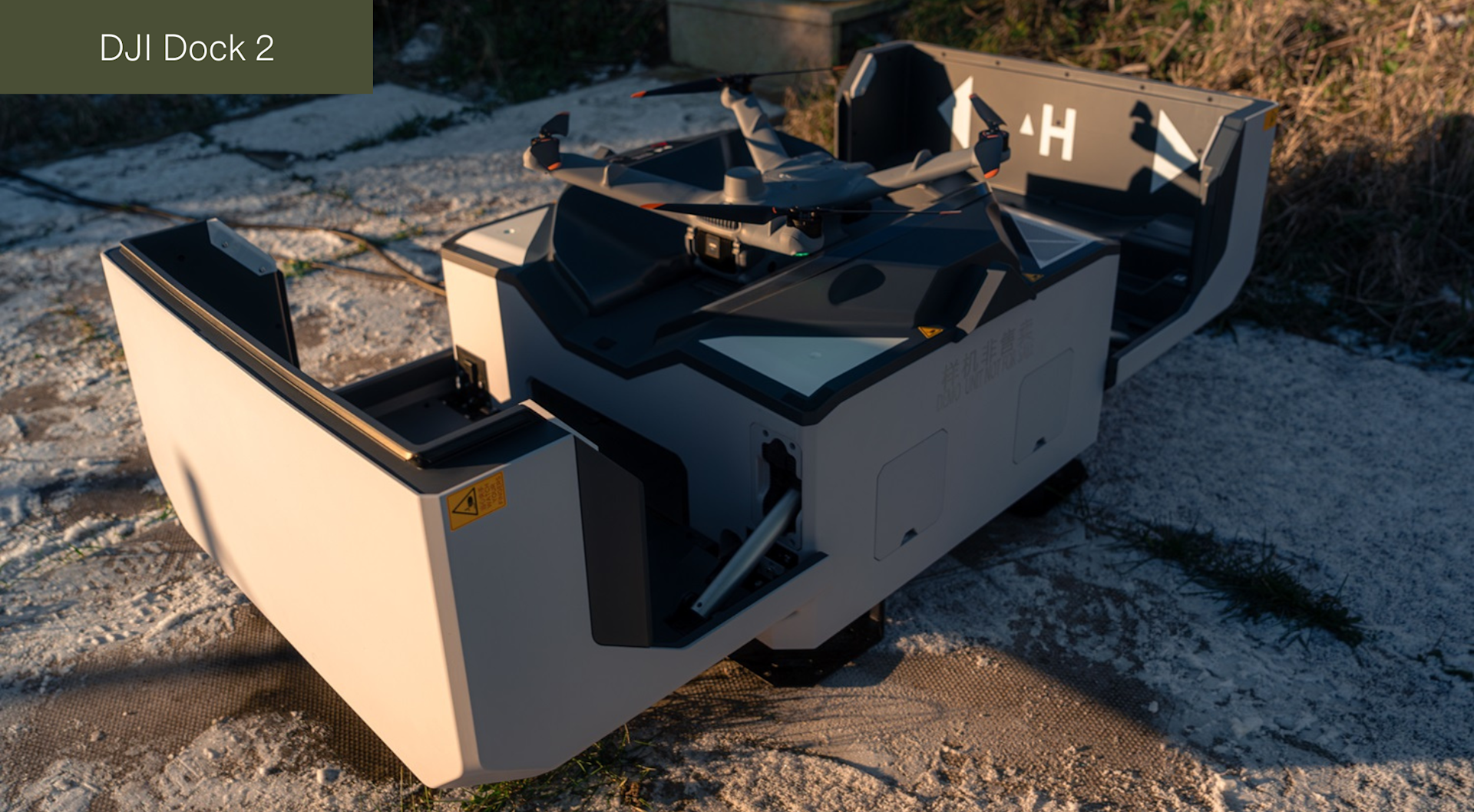
This new solution is a follow-up to the original DJI Dock - unveiled in March 2022 - and brings with it a suite of upgraded features.

These upgrades include:
DJI Dock 2 is 75% smaller and 68% lighter.
25% extra flight time and 43% increase in operating radius.
DJI's first dedicated surveying drone-in-a-box solution, thanks to its compatibility with the new M3D drone.
Significantly lower hardware cost.
These upgrades make the DJI Dock 2 an attractive prospect for automated and remote drone deployments - and in many ways, will transform the drone in a box market.
However, the original DJI Dock does retain the edge in some departments - including a faster drone charging time, and extra zoom capability and better IP rating on its compatible aircraft - so the release of the Dock 2 doesn't necessarily make its predecessor obsolete.
This comparison post highlights the differences between DJI Dock 2 and DJI Dock to help you find out which is best for your operations.
DJI Dock 2 Vs DJI Dock: Key Specifications
This table provides an at-a-glance view of the key specifications of the DJI Dock 2 and DJI Dock.
DJI Dock 2 | DJI Dock | |
Weight (aircraft excluded) | 34kg | 105kg |
Dimensions (L x W x H) | Open: 1228 x 583 x 412mm Closed: 570 x 583 x 465mm | Open: 1675 x 885 x 735mm Closed: 800 x 885 x 1065mm |
Dock IP Rating | IP55 | IP55 |
Temperature | -25°C to 45°C | -35°C to 50°C |
Input Power | Max 1000 W | Max 1500 W |
Compatible Drones | DJI M3TD; DJI M3D | DJI M30T (Dock Version); DJI M30 (Dock Version) |
Drone IP Rating | IP54 | IP55 |
Drone Flight Time & Max Operation Radius With Associated Dock | 50 mins 10km | 40 mins 7km |
Drone Charge Time | 32 minutes (20%-90%) | 25 minutes (10%-90%) |
Max Take-off Altitude | 2500m | 4000m |
Back-up Battery | 5+ hours | 5+ hours |
Return To Centre | Sliding System | Pulling System |
Charging System | Wireless Charge | Tap-to-charge |
Surveillance Cameras | Dual camera automatic switching | Single camera |
DJI Dock 2 Vs DJI Dock: In-depth Comparison
Now we've compared the key specifications of both Docking stations, let's delve deeper into the differences between DJI Dock 2 and DJI Dock 1.
Size
One of the biggest differences between the two Docks is their size.
The DJI Dock 2 is significantly smaller than its predecessor - as demonstrated in the image below.
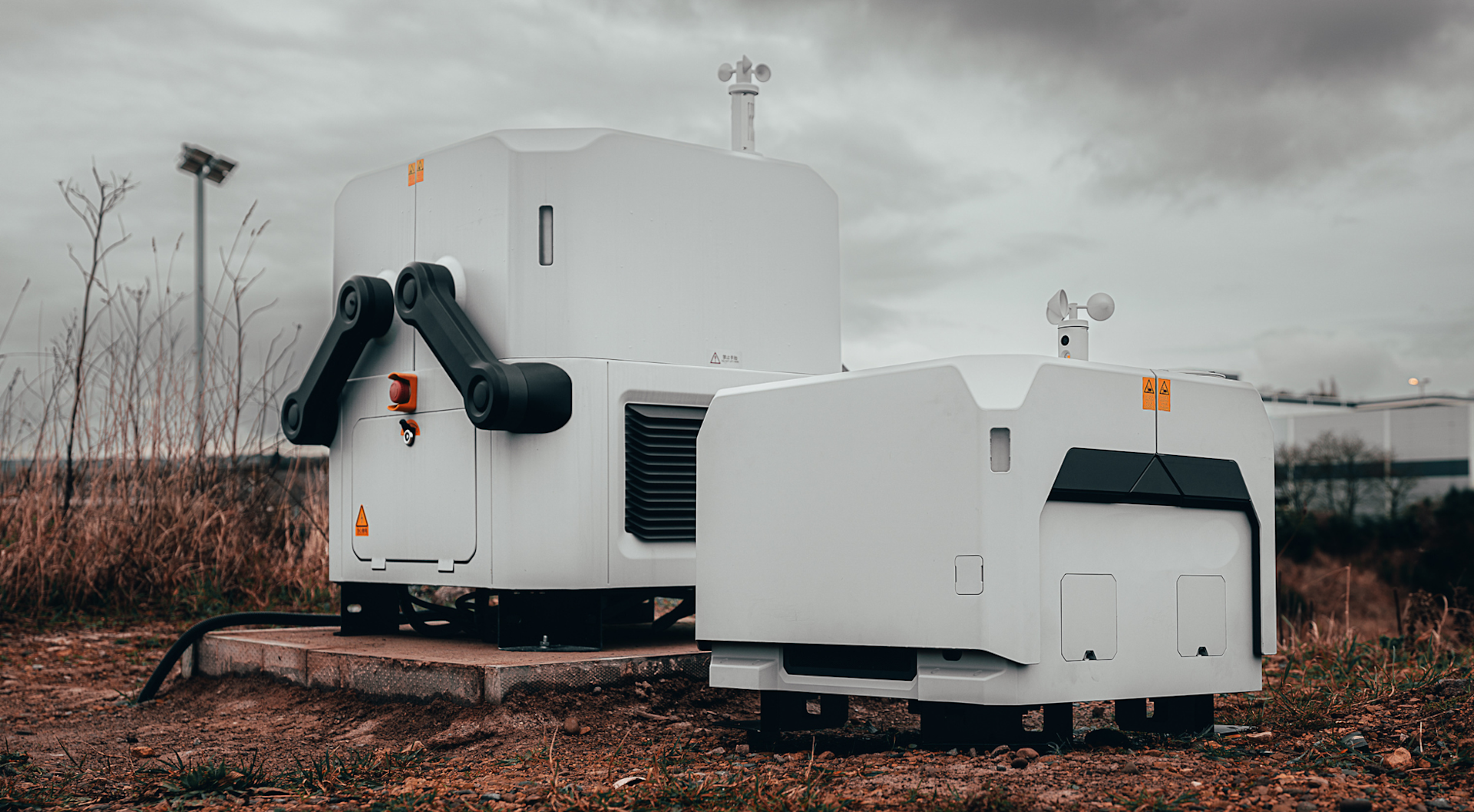
Dock 2 is also significantly lighter, weighing 34kg compared to the original Dock's 105kg. These weights are without their respective drones.
It makes the DJI Dock 2 easier to move and deploy to different areas, and requires less space at site. DJI Dock 2 can be carried by two people, and is small enough to fit in the back of truck.
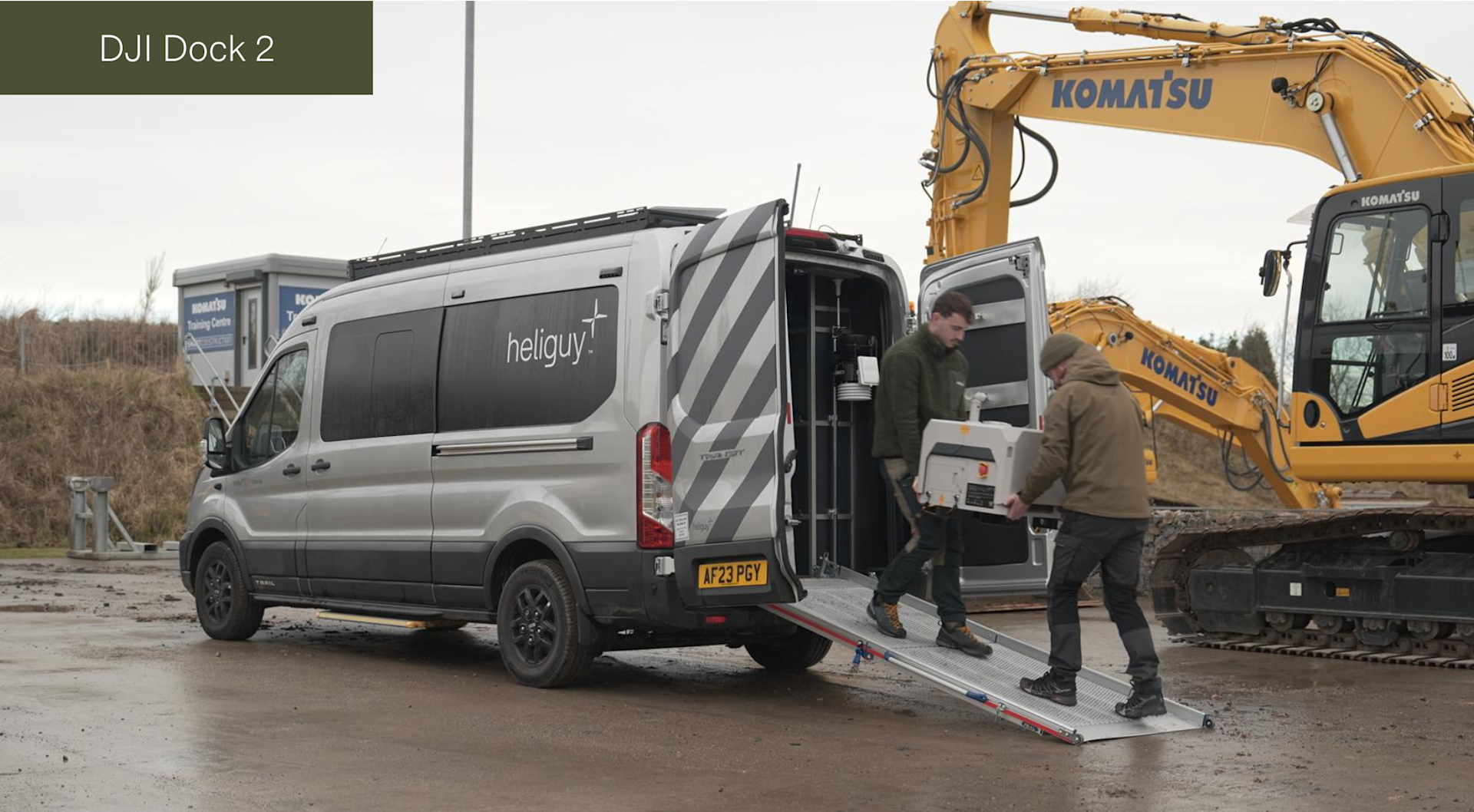
In contrast, with its larger footprint, DJI Dock 1 requires multi-person transportation, and its increased size and weight can make it inconvenient to deploy on a rooftop (although this is possible), and a crane is sometimes required.
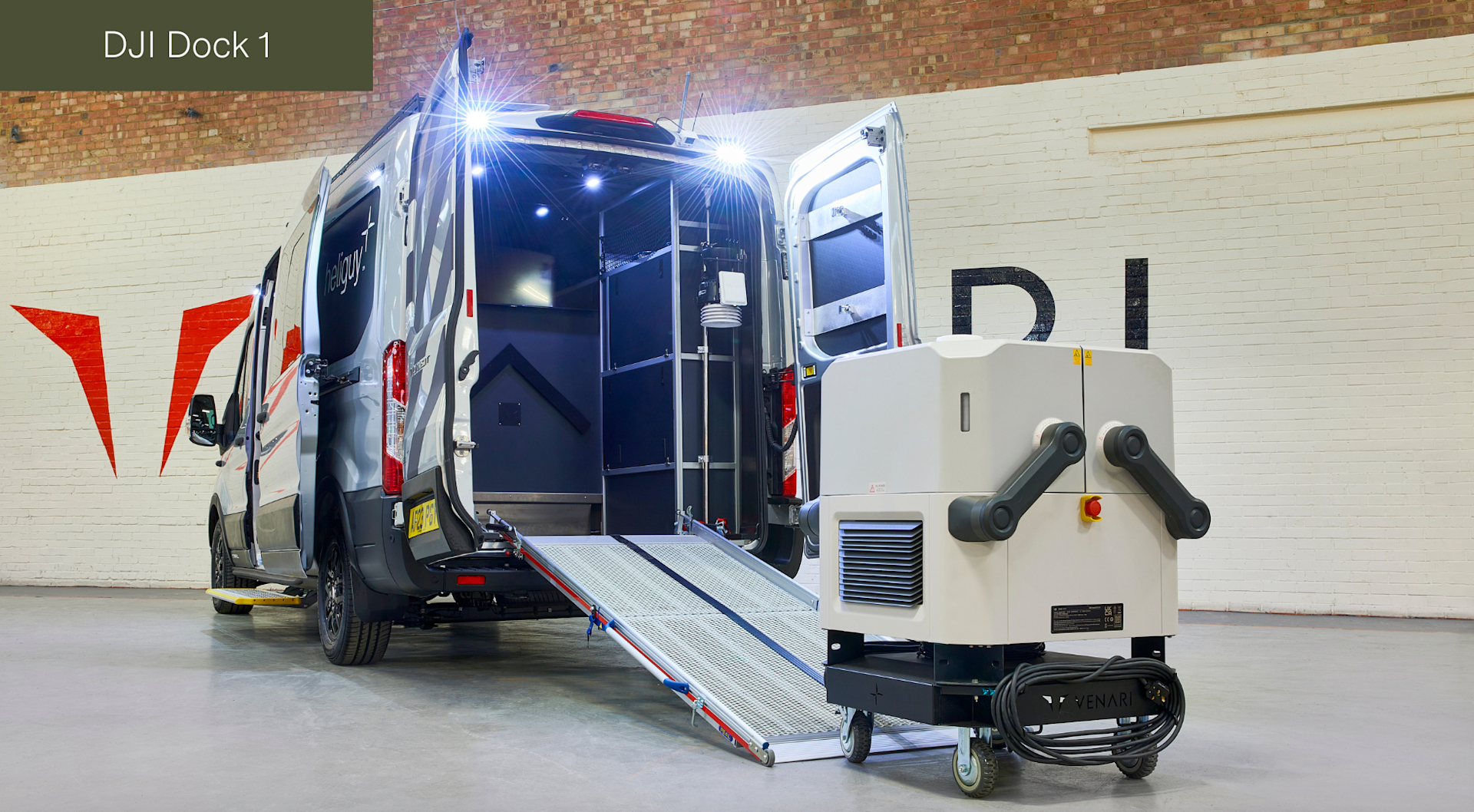
However, for some organisations, the dimensions of the original Dock might not be a limiting factor, especially if it is permanently sited in one location.
Drone Compatibility
Drone compatibility is a major differentiator between DJI Dock 2 and DJI Dock 1.
DJI Dock 2 integrates with the new DJI M3D and M3TD drones, whereas the DJI Dock 1 is deployed with the DJI M30/M30T (Dock versions).
The headline is that Dock 2 is DJI's first drone-in-a-box solution engineered for high-precision surveying.
This is courtesy of its compatibility with the DJI M3D, which has a 4/3 CMOS 20MP camera with mechanical shutter and 0.7s shooting interval.
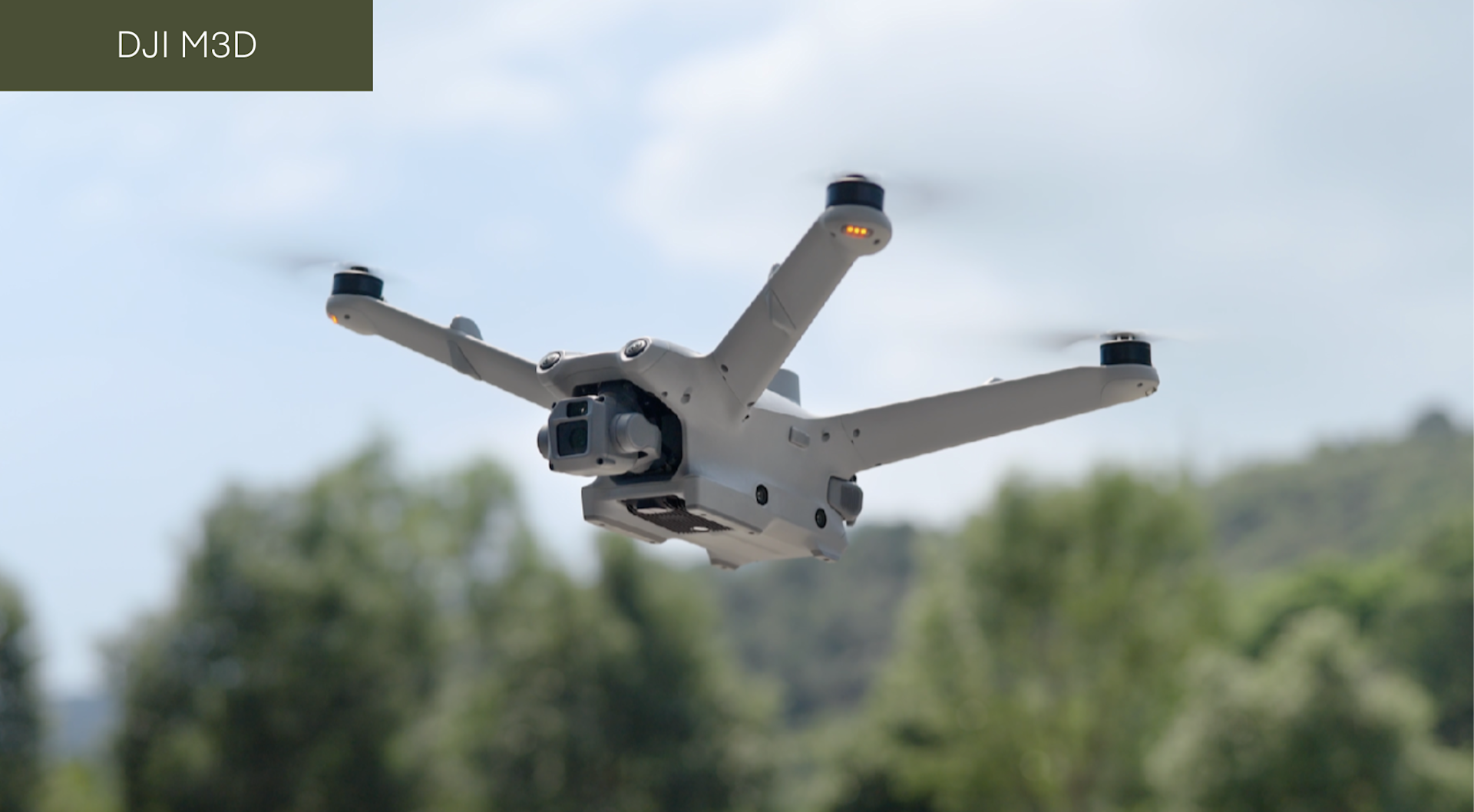
While the M3D brings survey-grade mapping capabilities, the M3TD for Dock 2 features RGB and thermal sensors.
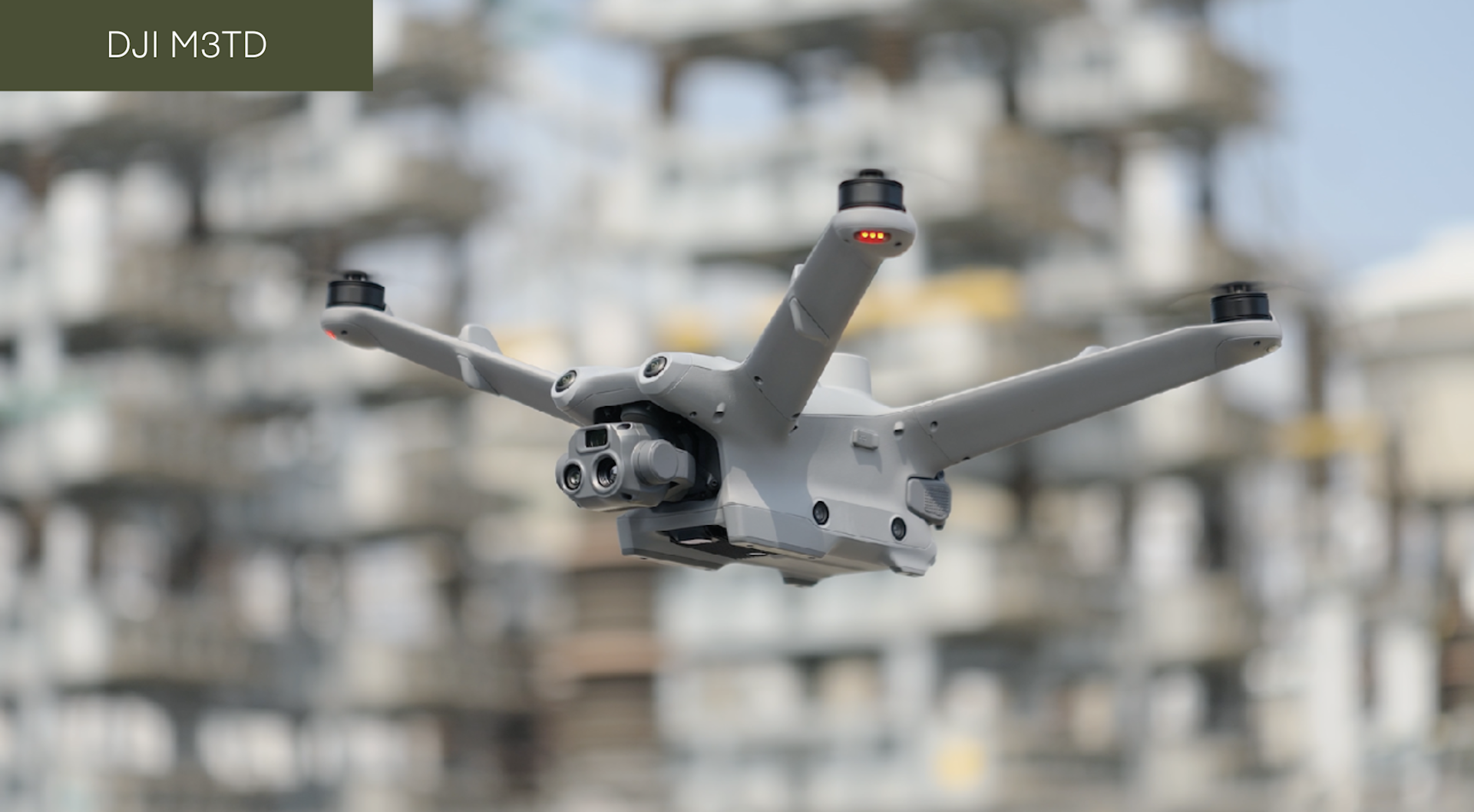
For an in-depth comparison between the DJI M3D and DJI M3TD, including sample datasets, click here.
As for Dock 1, the M30 (Dock version) has RGB imaging capabilities - although it is not engineered for surveying - while the M30T (pictured below) has thermal/RGB sensors.
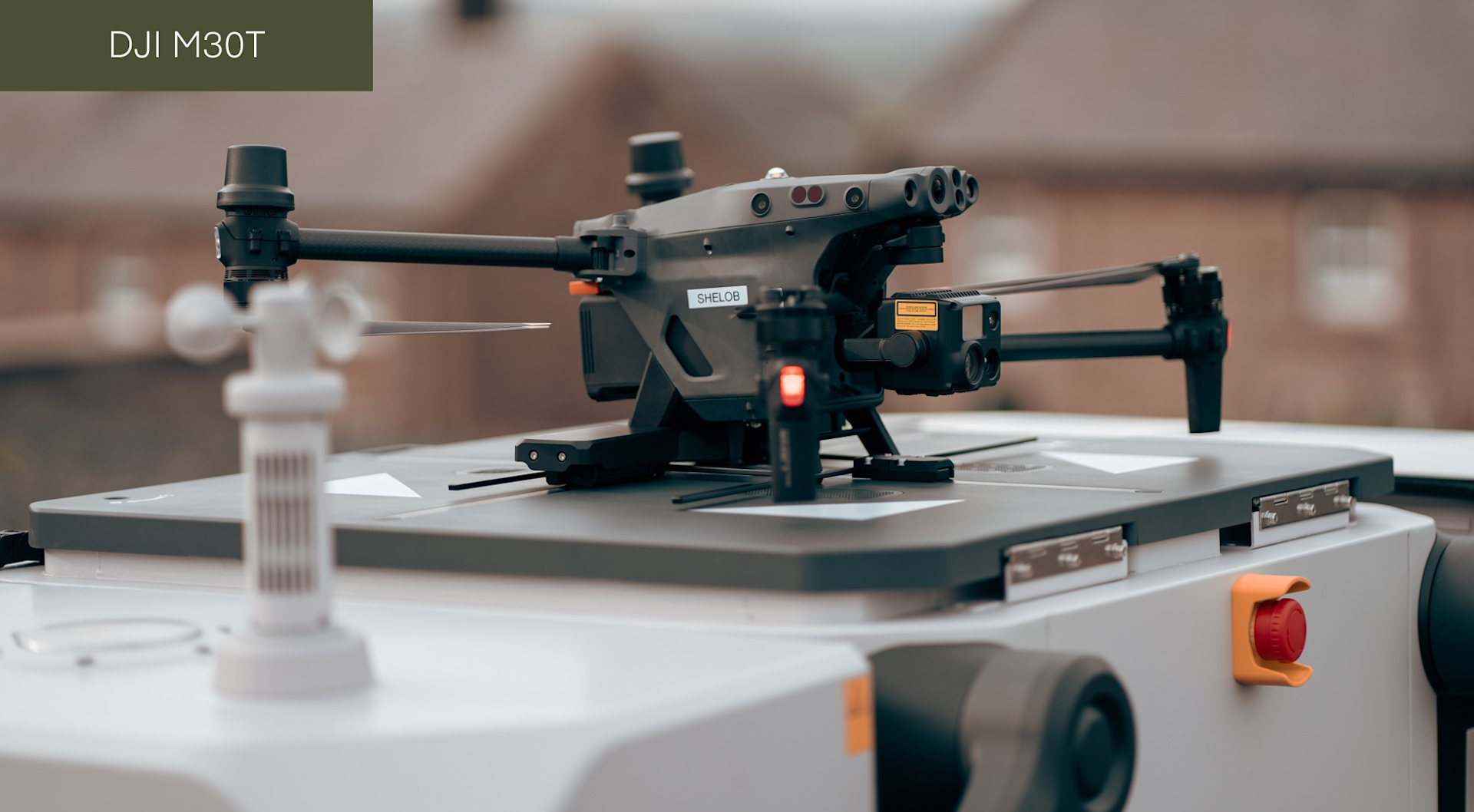
The table below highlights the key features of each payload for each drone.
DJI M3D | DJI M30 (Dock Version) | DJI M3TD | DJI M30T (Dock Version) | |
Wide Angle Camera | 4/3 CMOS 20MP Mechanical Shutter | 1/2'' CMOS 12MP | 1/1.32" CMOS 48MP | 1/2'' CMOS 12MP |
Tele Camera | 1/2" CMOS 12MP 56x hybrid zoom | 1/2'' CMOS 48MP 200x hybrid zoom | 1/2" CMOS 12MP 56x hybrid zoom | 1/2'' CMOS 48MP 200x hybrid zoom |
Thermal Imaging | N/A | N/A | 640 x 512 @ 30fps | 640 x 512 @ 30fps |
Laser Rangefinder | N/A | Range: 3 m - 1200 m | N/A | Range: 3 m - 1200 m |
FPV Camera | Not supported | Supported | Not supported | Supported |
The key takeaways from the table are:
DJI M3D is designed for high-precision surveying, thanks to its larger 4/3 CMOS sensor, mechanical shutter, and 0.7s shooting interval.
DJI Dock 1 drones have enhanced levels of visual zoom and feature a laser rangefinder, enabling operators to target a specific location or object and obtain its precise GPS coordinates.
Flight Performance
The DJI Dock 2 enables operators to collect more data in a single flight.
The DJI M3D Series can fly for 50 minutes and achieve a flight radius of up to 10km, when deployed with DJI Dock 2.
In contrast, the DJI M30 Series stays airborne for a maximum of 40 minutes, with a maximum 7km operation radius when deployed with the DJI Dock.
However, it is worth noting that, once the drones have returned to their respective docking stations, the DJI Dock can charge the aircraft from 10% to 90% in 25 minutes, while the DJI Dock 2 takes 32 minutes to power the aircraft from 20% 90%.
DJI M3D Series | DJI M30 Series | |
Max Flight Time | 50 mins | 40 mins |
Max Operation Radius (with docking station) | 10km | 7km |
Battery Re-load Time (at docking station) | 20% to 90% in 32 minutes | 10% to 90% in 25 minutes |
Max Speed | 21m/s | 23m/s |
The M3D Series drone automatically bypasses obstacles during flight (obstacle data needs to be enabled), whereas the M30 Dock series can only hover or return to start when obstacles are encountered.
Weather-proofing
Drone-in-a-box solutions are designed for on-demand and round-the-clock data collection.
Therefore, their ability to handle all weather conditions is integral.
In this case, the M30 Series (Dock Version) drones have a slightly more robust operational envelope compared to the DJI M3D Series - as the table below shows.
But the M3D Series is IP-rated, so these drones can also handle the elements.
DJI M3D Series | DJI M30 Series (Dock Version) | |
IP Rating | IP54 | IP55 |
Operational Temperature | -20°C to 45°C | -20°C to 50°C |
Wind-speed Resistance | Wind resistance during operation: 12 m/s Wind resistance during take-off and landing: 8 m/s | Wind resistance during operation: 12 m/s Wind resistance during take-off and landing: 12 m/s |
On the weather-proofing front, the docking stations themselves are rugged and robust pieces of kit and can maintain operational continuity in tough weather conditions.
The Dock 2 can withstand temperatures from -25°C to 45°C, while the DJI Dock operates from -35°C to 50°C. Both have an IP55 rating.
Docking Station Performance
DJI Dock 2 has been designed to produce a more optimised experience - with a faster take-off, more precise landing, and less maintenance requirements.
Easier Maintenance: Dock 2 features a simplified structure with a slide-ramp centering design, and wireless charging. Dock 1 design has push-rod centering and contact charging, which makes it more complex to maintain.
Faster Take-off: Dock 2 can take off without requiring an RTK fix, whereas Dock 1 must wait for RTK to be fixed.
More Precise Landing: Dock 2 has next-gen image recognition technology to accurately identify position markers on the landing pad. A new slide-ramp centering design on the landing pad further improves this. In comparison, Dock 1 mainly relies on RTK for landing, assisted by visual algorithms.
DJI FlightHub 2 And Third-party Support
DJI FlightHub 2 is compatible with both Docks, providing a cloud-based platform for mission planning, remote deployment, and data-centralisation.
The Dock 2 and Dock 1 also support Cloud API, allowing third-party developers to build cloud platforms for operation and management. Third-party software support includes solutions such as FlytBase and Drone Harmony.
The drones for Dock 2 and Dock 1 can also support third-party payloads. The image below shows the DJI M3TD integrated with the Soarability Sniffer4D Nano2 gas detection module.
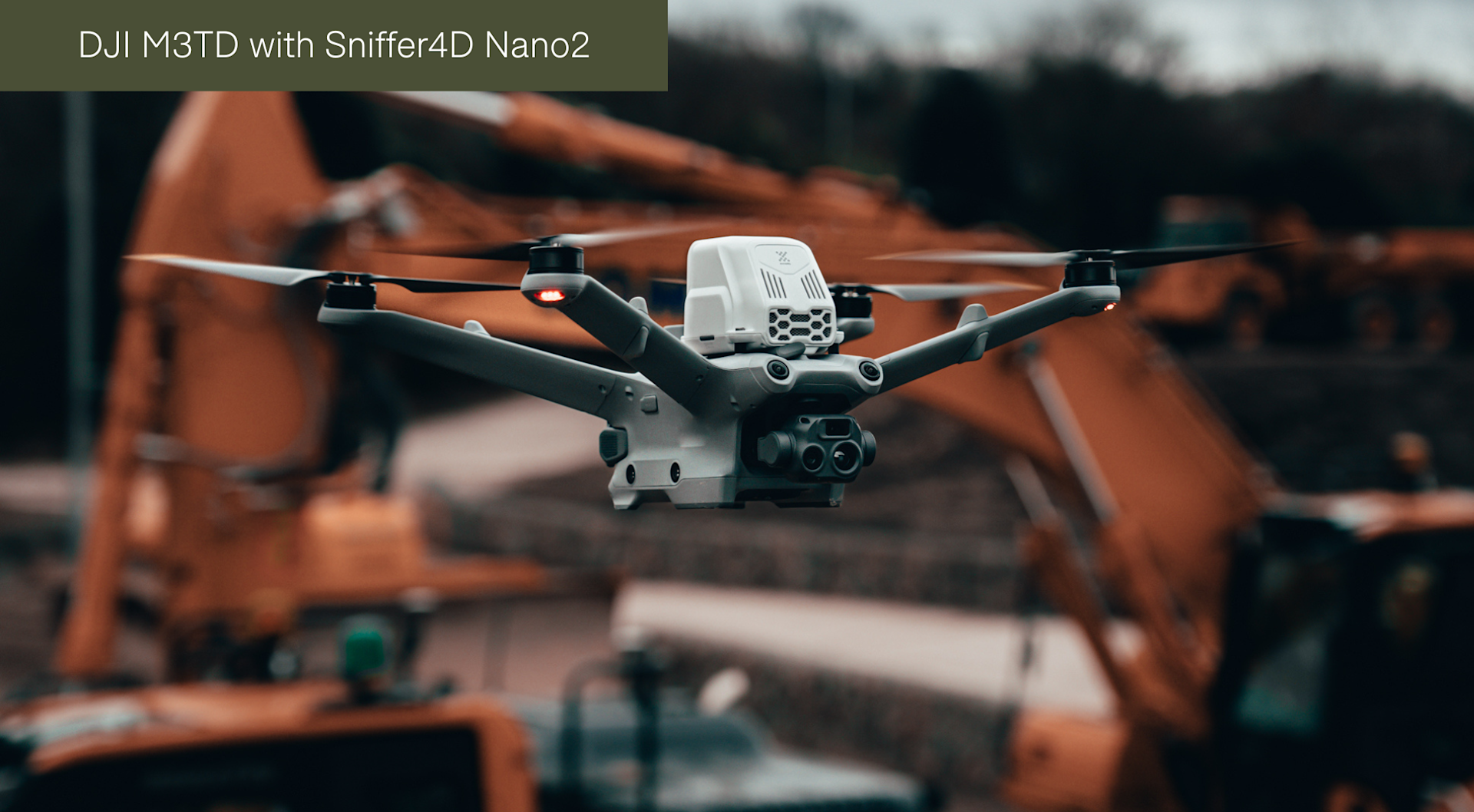
DJI Dock 2 Vs DJI Dock: Pricing
DJI Dock 2 is a more cost-effective solution compared to DJI Dock 1, with lower hardware costs and reduced deployment and maintenance service costs.
Whereas Dock 1 is in the region of £20,000, Dock 2 is about half this price.
DJI Dock 2 Vs DJI Dock: Use Cases
One of the biggest advantages of the Dock 2 is that it meets a growing need for a remote high-precision surveying solution, thanks to its compatibility with the Matrice 3D.
This opens new opportunities in scenarios such as construction site management, earthwork calculations, and mining.
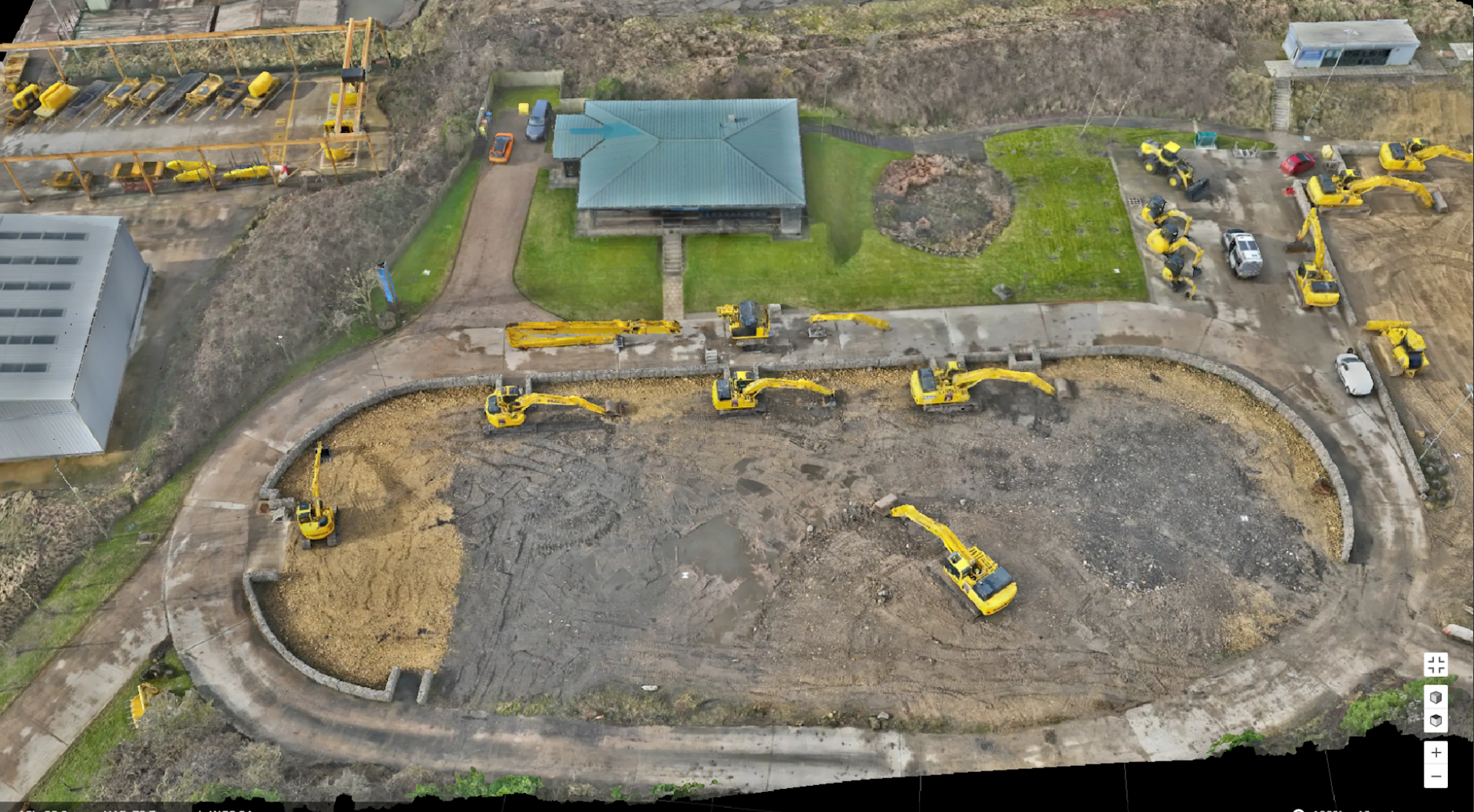
Added cloud mapping functionality - whereby DJI FlightHub 2 generates a high-precision 3D model based on the collected flight data - is a useful tool for modelling, as is the Model Comparison tool which displays model changes over time.
When deployed with the M3TD, the Dock 2 can be used for applications such as security patrol, emergency response, and automated asset inspections.
These are use-cases which can be replicated with the original DJI Dock.
It's worth noting that with the DJI M30 Series having greater zoom; laser rangefinder; and a marginally better operational envelope, the original DJI Dock is particularly suited to in-situ operations such as parameter security.
Summary
The DJI Dock represented DJI's first foray into the drone-in-a-box market. The world's leading drone manufacturer has built upon this with the release of the Dock 2.
One of the main highlights of the Dock 2 - for certain sectors at least - is that it is more tailored to surveying and mapping applications, when deployed with the M3D aircraft.
The Dock 2 also brings with it enhanced flight time, increased operation distance, smaller footprint, reduced hardware costs, and faster take-off: All significant benefits.
But it doesn't necessarily signal the end for the original DJI Dock. From a capability point of view, it offers robust weather-proofing and faster drone charging - factors which can be important for organisations deploying a remotely located, permanently-sited drone-in-a-box which is required to operate on-demand.
heliguy™ is a DJI Dock 2 and DJI Dock partner and can help organisations integrate these drone in a box solutions into their workflows. This includes site visits, training/regulatory support, and in-house geospatial department. For more information, contact us.
